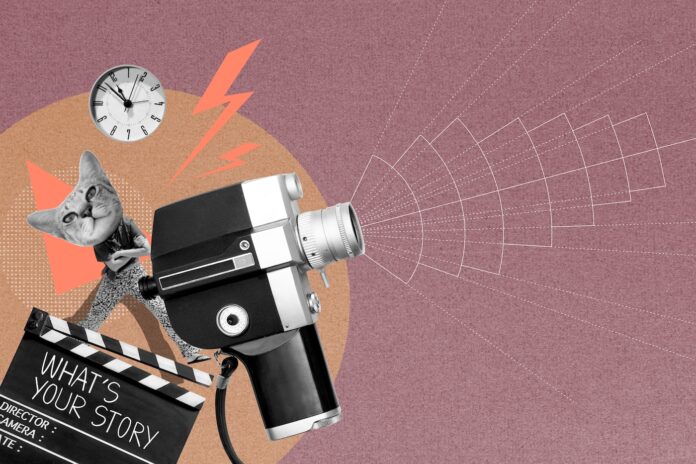Despite its many challenges, cannabis is supposed to be one of the most exciting industries in the modern age.
And make no mistake, safe access to cannabis is exciting. But you wouldn’t know it by the lackluster marketing efforts coming out of the space.
Perhaps you’ve heard the complaints: tight budgets, regulatory restrictions, crazy tax laws, and understaffed teams. As painful as these realities are, they shift focus away from the heart of the matter.
The real issue in cannabis marketing: negligent storytelling.
Storytelling is as important as language itself. It’s one of the few things that unites us as human beings. It’s how we achieve clarity and meaning. It’s how we make decisions and inspire action in others.
Nothing happens without a compelling story—except apathy, boredom, or confusion.
And confused people never say yes to something.
By the way, how many people do you think are still confused about cannabis?
Missing in action: story-driven marketing
Storytelling is the backbone of great marketing, but very few cannabis marketers have actually mastered the principles of story.
Pull up the social media channels for almost any brand, and you’ll mostly find announcements for discounts and special offers or an endless line of product glamor shots and other storytelling fails.
Here’s another glaring instance: a dispensary website full of blog posts about quarterly financial updates and recent additions to the board of directors. Instead of targeting prospective customers, investors are the target audience.
“Cannabis brands struggle with storytelling for a few reasons,” said Brad Bogus, a fractional chief marketing officer in multiple industries including cannabis. “For one, most companies struggle because almost no one teaches storytelling in business school or when coaching entrepreneurs. It’s a skill of art, not business, and is left out of most education, training, coaching, and mentoring. Most people just don’t have experience in it.”
The other big issue, Bogus continued, is a lot of cannabis operators simply can’t afford to hire a storytelling specialist. The economic struggle for the majority of operators is very real.
“Most operators have to scale way back on their marketing budget, leading to mostly entry-level hires who don’t specialize—great at executing on tactics, not great on strategy and messaging,” he said. “With more budget to work with, one can expand the marketing team to include specialists capable of great storytelling.”
The disconnect between brands and consumers
Even when funding is available for robust marketing efforts, many cannabis brands don’t have a clue about how to truly connect with consumers.
“Many times I’ve had to create stories out of nothing,” senior brand strategist Bri Smith said of clients who invested in cannabis with no previous point of reference to the plant. “No personal connection to cannabis, no lifelong mission of advocacy, no unique offerings solving a problem. Some brands don’t have a story to tell.”
Brands also struggle with creativity and finding the best ways to reach their audience.
“Billboards and crappy programmatic ads are horrific at storytelling,” said Scott Jennings, founder and chief executive officer at Pantry Food Co. “They’re low-level ads that aren’t convincing a large percentage of potential customers to come into the industry.”
Indeed, demand generation is practically nonexistent in cannabis today, which says a lot when you consider how many people are still trying to overcome 80-plus years of harmful misinformation.
It’s ironic. While cannabis legalization efforts call for powerful storytelling and a relentless drive to change hearts and minds, this intense focus abruptly vanishes after legalization.
Getting clear about your target audience
Who’s your target audience? If it’s “everyone who smokes weed,” you’ve stumbled into the same pitfall as many other cannabis marketers.
Cannabis consumers come from all different backgrounds, and trying to lump them together is trying to be everything to everyone. You’d think cannabis operators would have enough business acumen to avoid this trap, and yet it’s quite common throughout the industry.
“I think there’s a belief that the cannabis consumer is a part of the ‘cannabis community,’ as if we all exist in the same places with similar interests, beliefs, and style,” Bogus said.
Cannabis consumers actually don’t identify as “the cannabis community,” he continued. Some like to mellow out around jam bands; others are into punk and street protests. They’re corporate professionals with minivans full of kids, or they’re weekend warrior outdoors junkies.
“What will make your marketing the most effective is to pick one or two target customer profiles and absolutely nail it with your marketing and messaging to them,” Bogus advised. “If you can slam dunk for those customers, you can expand and win others. Focus. Be something specific to someone and you’re likely to pick up others along the way. Stand for something or stand for nothing. Those are your choices.”
Along these lines, most cannabis marketers are guilty of the same oversight that plagues marketing departments in many other industries: not talking to the customers. Is there a worse blunder in marketing than not knowing your audience? If you want to compromise your marketing efforts from the very beginning, that’s how you do it.
“I’d also blame investors, distributors, and sales reps,” Jennings said. “A well-known [consumer packaged goods] expert pointed out to me how all of these groups are incentivized to push operators or brands to grow as fast as possible and into as many accounts, stores, or markets as possible. Meaning sell to everyone because everyone is your customer. How wrong that is.”
Guiding people toward your brand
“Oh, but come on! It’s weed! It’ll sell itself,” said countless cannabis stakeholders. That sort of attitude is probably why the cannabis industry has yet to achieve any real market penetration.
According to a 2022 Gallup poll, only 16 percent of Americans consume cannabis. Meanwhile, the country is evenly split regarding cannabis’s overall effect on society—49 percent say it’s positive and 50 percent consider it negative.
Imagine the successful marketer as a safari guide who knows the terrain and the wildlife (the product) inside out. They’re also deeply attuned to their guests (the audience)—their interests, fears, and expectations. The guide creates an unforgettable experience by skillfully navigating the landscape and its creatures to match their guests’ desires.
Now imagine the opposite with a safari guide who doesn’t know the lay of the land and/or is clueless about their guests. You see these sorts of trainwrecks in cannabis marketing all the time.
“For a lot of the early brands on shelves in legal states, I think it became easy to believe that none of this disciplined brand-building really mattered. They probably felt they were going to do well no matter what,” noted Tim Naughton, founder of Heady, a cannabis digital marketing agency. “And instead of the ‘green rush’ drawing in competitors that were better at storytelling, the space became saturated by lots of brands that didn’t have much unique about them.”
Naughton believes the problem is compounded by brands overthinking content creation.
“They think they need production value and creative agencies, rather than just getting started with simple, authentic stuff,” he said.
In essence, it’s not just a marketing issue or a content-development issue.
It’s not just a public relations issue.
It’s a storytelling issue.













[…] best marketers use A/B testing to understand their evolving audience and fine-tune their messaging in the most personalized and engaging way possible. Once the A/B tests come to a close, most teams […]
[…] Whether or not you hire those supportive roles in-house or engage ancillary service providers is up to your business plan and budget. The important thing is not to leave that key support out of said roadmap—or your enterprise might not get off the ground. In addition to legal and business consultants, some of the most successful brands in cannabis also look to copywriters and creative talent who are familiar with the kind of language and inclusions regulatory bodies want to see. That’s an added expense up front, but one that can make or break a licensing application. In cannabis regulation and marketing alike, it’s not just what you say, but how you say it. […]
[…] company photoshoot, you need to make your goals clear. What do you want to convey with the images? Know your story before you begin. If you want to build a narrative centered around being a small, family-owned […]
[…] will experience immersive cultural storytelling highlighting legacy cannabis craft, tales from the war on drugs, and human rights stories including […]
[…] Your dispensary’s exterior, logo, and name should tell the same story as your interior and social marketing. Court your target consumer at each stage with a story tailored specifically for them. […]
[…] Mendo Don, Cobb is a big believer in the cultural history of the plant and reinforces that in the storytelling and branding for Sunburn. In his case, cannabis played a major role in his family legacy. His dad, […]
[…] have to have a story. People pay attention to a story much more than you think. And you need to have good products. You can’t just think your consumers […]
[…] This is important, so pay attention: Sales is the act of converting products or services into revenue. Marketing, on the other hand, creates relationships and desire. Sales is commodity-driven and always involves a call to action. (Think “Buy now!” or “$30 off this week only!”) Marketing transforms commodities into brands and brands into icons. Instead of presenting the product or service to consumers, marketing brings consumers to the product by creating powerful emotional connections. […]
[…] does have meaning is a compelling, true story. Sharing real-life tales of finding relief for patients, bonding with friends and family without […]
[…] “There’s certainly a lot of room for these cannabis companies to try and make a name for themselves or become a little more well known,” Floyd said, adding that the storytelling doesn’t quite seem to be there. […]
[…] work, but AI marketing tools already are helping professionals cut down on tedious tasks related to copywriting and data analysis. When used properly, the tools can free up valuable time to help humans focus on […]